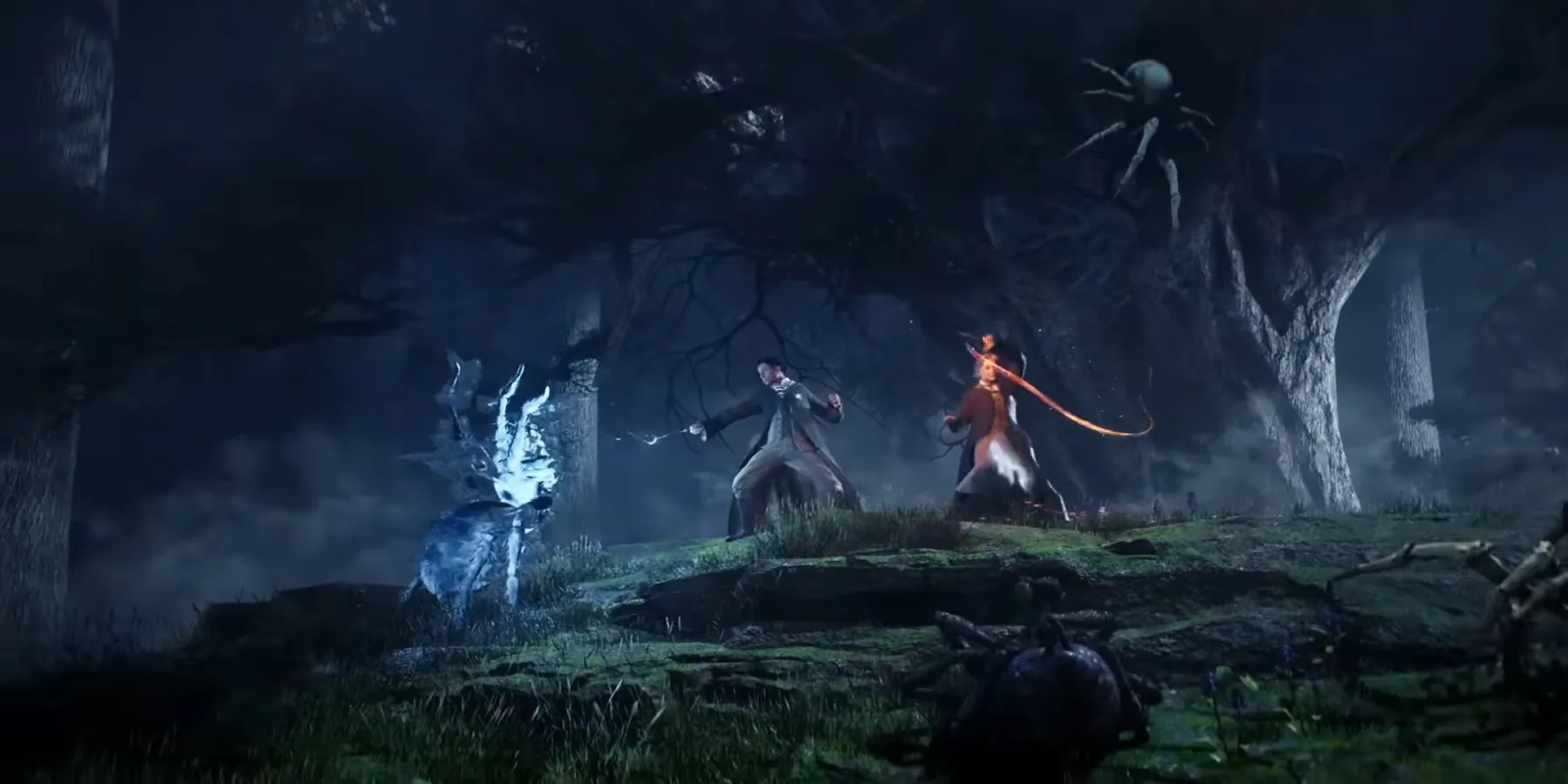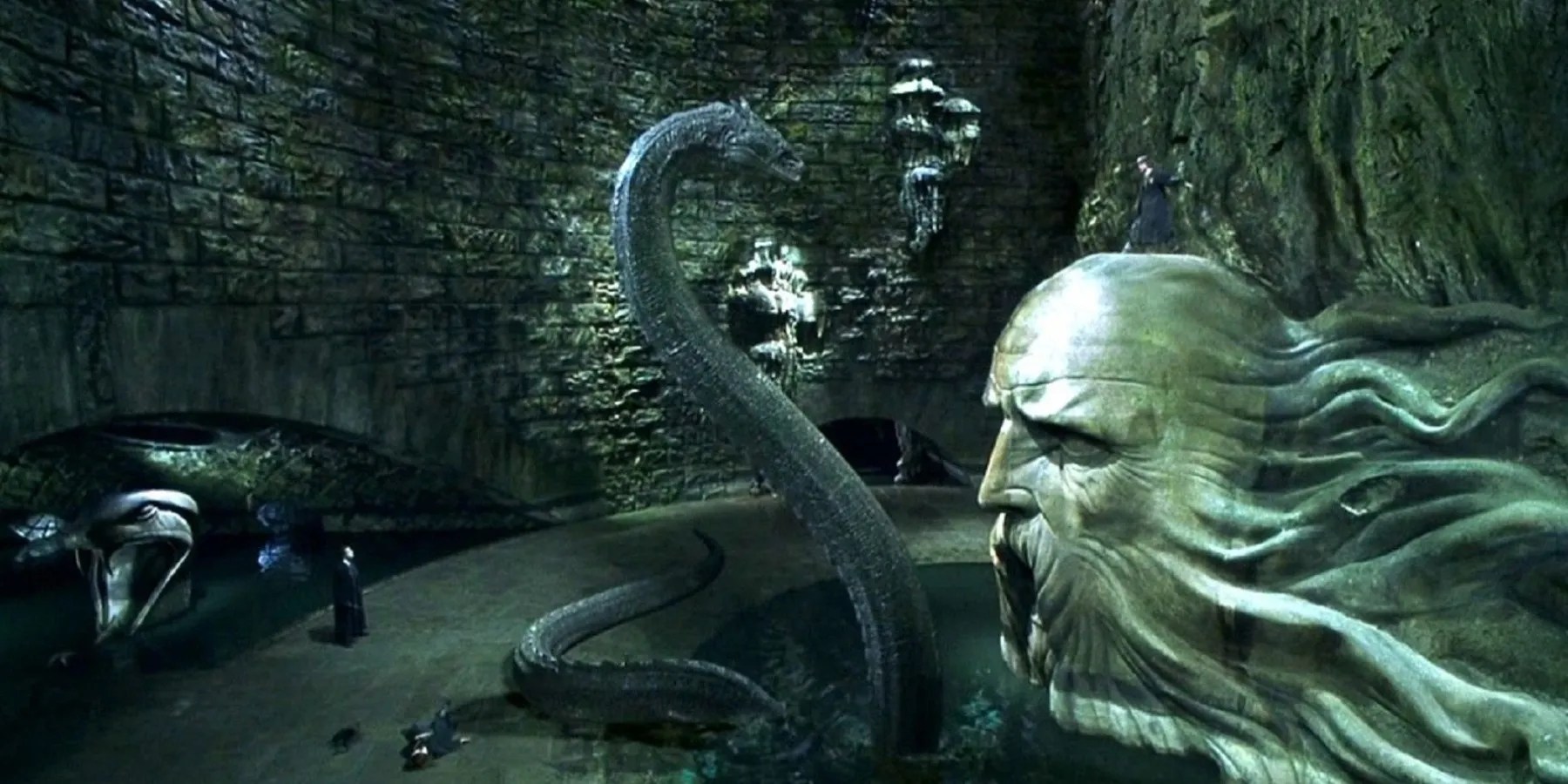The Wizarding World ofHarry Potteris filled with many creatures, both majestic and terrifying. One of the most horrific and iconic of all is the acromantula, second only to the basilisk. Spiders are part of many, if not all, of the world’s mythologies. Sometimes they are tricksters who teach cautionary tales like Anansi of West Africa. Other times they’re just plain scary.
In Western fiction, giant spiders have been a fixation of fantasy writers since at least the days of Tolkien. Shelob and the monstrous Ungoliant are classic villains that have inspired generations of creatives since. It’s easy to see where the acromantulas of Harry Potter’s world fit into the grander scheme of arachnid mythology, but what are acromantulas, and where do they come from?

RELATED:Hogwarts Legacy: 10 Magical Creatures We Want As Pets
What is an Acromantula?
Acromantulas are a species ofgiant, fully sentient, talking spidersnative to the Island of Borneo. Usually, they grow to about the size of a cart-horse, but at least one member of the species grew to have a leg span of eighteen feet and was around the height of a fully grown elephant. Unlike most nonmagical species of spider, Acromantulas are social spiders, preferring to live in massive colonies led by the eldest male and female members. They share prey, consuming anything unfortunate enough to wander into their territories.
Typically, a female Acromantula lays a clutch of one hundred beach ball-sized eggs at a time, which hatch about six to eight weeks later. It is unknown how large colonies get in their native habitat of Borneo, but the acromantula colony in theForbidden Forestin the Scottish highlands was several hundred members large. This may have been due to a lack of natural predators in the reason, as the spiders were an invasive species.

The Acromantula’s only known predator is the basilisk, an ancient serpentine monster formed when a chicken’s egg hatches under a toad. Acromantula’s fear basilisks above all other creatures, refusing even to speak of them. It’s possible that the spiders’ fear runs so deep due to simple biology. Any creature, man or otherwise that looks directly at a basilisk dies immediately. Acromantulas have eight eyes and a wide field of vision, making them especially vulnerable to the monster’s lethal presence.
In the Wizarding World, acromantulas are considered extremely dangerous. The sale of their eggs is strictly forbidden. Due to this prohibition, acromantula venom is incredibly valuable. Professor Slughorn once claimed that a single pint of venom, of which the large spiders likely produced several, was valued at 100 galleons in 1996.

Players ofHogwarts Legacywill be familiar with the creatures, as acromantulas are among the most impactful and dangerous enemies in the game. The game’s spiders are so pervasive and frightening that the game developersincluded an arachnophobia mode post-launch. The mode turns the menacing creatures into floating, many-eyed bubble creatures tottering around on roller skates a la Ron Weasley’s use of the Ridikkulus charm in Prisoner of Azkaban.
For some fans, theirinclusion in the game raised more than a few questionsas both the Harry Potter film series and books did nothing to suggest that Acromantulas had visited the Hogwarts Valley before the events of the main timeline. However, the game sees players eradicate spider dens, hunting down the three in-game acromantulas, thus solving the complaint about continuity errors. Hogwarts Legacy’s Forbidden Forest is full of giant spider dens though the in-game lore explains that they are not acromantulas but a different species entirely, “Thornbacks.”

The canon status of Thornbacks and their variations is unknown, but in a universe like Harry Potter, it stands to reason that there would bemore than one species of magical spider. What’s more, the game does nothing to take away from acromantulas’ uniqueness, as none of the other species are shown to be capable of speech or higher thought beyond hunting prey. Further, acromantulas appear in select dens, usually as the main boss of various mini-quests. Their appearance is noticeably distinct from the rest of the arachnid enemies, much larger, more traditionally spider-like in appearance, with more damaging combos.
Which Acromantula is featured in Harry Potter?
The world’s first introduction to acromantulas came inHarry Potter and the Chamber of Secrets, the second book in the series. In it, Harry is told byVoldemort’s Horcrux, hidden in a diary, that Hagrid was blamed when a student died the last time the Chamber was open. Hagrid was in his third year at Hogwarts when an unknown traveler gave him an acromantula egg. Hagrid raised the spider that hatched from it, naming him “Aragog.” The name is a combination of arachnid (“ara”) and “gog,” a Hebrew word for either the leader of evil forces opposed to God or the army itself in an apocalyptic battle.
When Voldemort, then Tom Riddle, opened the chamber andused the basiliskinside to kill Moaning Myrtle, he framed Hagrid and Aragog to prevent Hogwarts from closing. When Tom confronted Hagrid and attempted to Aragog, the spider fled into the Forbidden Forest.Hagrid was expelled, but Dumbledore was able to land him a job as the school’s groundskeeper. This allowed Hagrid to continue caring for Aragog, visiting him and feeding him until he was able to fend for himself.

Hagrid even found a female acromantula named, Mosag (meaning “filthy” or “dirty woman”) for Aragog to mate with. The two founded the previously mentioned massive colony in the Forbidden Forest. In 1993, Harry Potter and Ron Weasley visited the colony and spoke with Aragog, hoping the spider would help them clear Hagrid’s name and give them some insight into what was really lurking in the Chamber.
Aragog told them his story but wouldn’t name the basilisk, explaining that spiders feared the creature above all others. He further explained that though he had instructed his children not to harm Hagrid out of love, he would not stop his children from feeding on the two boys or any other humans who entered their den. During Harry’s sixth year at Hogwarts, Aragog died, leaving his children without a clear leader. During the battle of Hogwarts, Death Eaters forced them out of their den in the Forest, causing them to rush the grounds, attacking members of both sides. With Aragog gone, they even attacked Hagrid during their rampage through the castle and its grounds.

In the books, an acromantula was placed next to the Triwizard cup at the center of the maze as a final obstacle. It isn’t confirmed, but it stands to reason that the spider was one of Aragog’s brood, possibly captured from their den. Fans of both the Harry Potter book and film series; and those who’ve played Hogwarts Legacy likely know just how vicious and cunning acromantulas are. Perhaps many have had their share of the eight-legged monstrosities. But thanks to the newMax original Harry Potter show, the world will come face to face with Aragog and his disgusting children, whether it wants to or not.
MORE:A Future Wizarding World Game Doesn’t Have to Be Confined to Hogwarts Castle